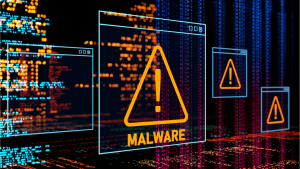In 2024, over 70% of large businesses and 50% of SMEs have reported being the target of a cyber attack. By far, the most common attack faced was phishing at 84%. With employees being the weakest link, they are the main focus for hackers.
Having employees trained on cyber security awareness is far more than simply understanding what a phishing email looks like, it provides fundamental knowledge from setting strong passwords to identifying possible risks that should be reported.
Cyber security risks can be reduced from as high as 60% down to 10% implementing a good training program.
One of the most effective ways to fortify your defenses is through comprehensive cybersecurity awareness training for employees. This training equips staff with the knowledge and skills needed to recognize and respond to cyber threats, thereby significantly reducing the risk of security breaches.
While the initial investment has some companies reluctant to get started, training your employees will give them more confidence in reporting suspicious activity promptly, greatly reducing risks of data breaches and the massive fines that follow.
The First Line of Defense: Your Employees

Why Are Employees The Targets?
Employees are the first line of defense against cyber threats. They interact with emails, web applications, and other digital platforms daily, making them prime targets for phishing attacks and other social engineering tactics. Simple mistakes, such as using weak passwords, clicking on suspicious links, or failing to recognize a phishing attempt, can open the door for cyber attacks. Cybercriminals exploit these errors to gain unauthorized access to systems.
Employees who are not adequately trained in cybersecurity awareness are more likely to fall victim to scams and attacks. Lack of awareness about the latest cyber threats and best practices makes employees vulnerable targets.
Cybercriminals often target employees because they can be the weakest link in the security chain. Training programs can help employees recognize and report these attempts, protecting the organization from potential breaches.
The Role of Employee Vigilance
Training programs equip employees with the skills to identify potential threats, such as phishing emails, malicious links, and unusual requests for sensitive information. Majority of employees do not spot these threats early and take appropriate action, leaving others to fall victim.
Educated employees are more likely to adhere to established security protocols and best practices. This includes using strong passwords, enabling multi-factor authentication, and securing sensitive data. To top if off, training helps press the importance of reporting suspicious activities and potential security incidents immediately. Early reporting allows the IT team to investigate and address threats before they escalate.
Reducing Human Error
The Impact of Human Error on Cybersecurity
Human error is a leading cause of security incidents, it’s as simple as every person makes mistakes, and that is what hackers try to exploit. Simple mistakes, such as clicking on a malicious link or using weak passwords, can have devastating consequences. Human error is responsible for 95% of cybersecurity breaches, according to an IBM study. This highlights the critical need for ongoing employee education and training.
Would cyber security awareness stop employees from making mistakes? Most likely not.
But it would take all the guessing work out of the equation, and make employees more suspicious of that random email sent asking for confidential information.
Best Practices for Employees
Training programs teach employees about best practices for password management, safe browsing habits, and how to securely handle sensitive data. A A good training program will cover all the necessary topics needed to tackle and reduce human error, and organizations can significantly lower the risk of cyber attacks. Employees learn to create strong passwords, recognize phishing attempts, and follow protocols for data protection.
It is important that employees are aware of all internal procedures for reporting suspicious activity, this can be integrated with the training programs. When training programs incorporate detailed instructions on how to report suspicious incidents, employees are more likely to remember and follow these procedures
Fostering a Security-Conscious Culture
Building a Strong Security Culture
A strong security culture starts with informed and engaged employees. Cybersecurity awareness training fosters a culture of security within the organization, and allows for questions to be asked rather than shying away. When employees understand the importance of cybersecurity and their role in protecting the organization, they are more likely to adopt and promote safe behaviors. This collective vigilance creates a robust security environment that can withstand various cyber threats.
Encouraging Continuous Learning
Continuous learning and improvement are key components of a security-conscious culture. Regular training sessions, updates on the latest threats, and sharing best practices help keep cybersecurity at the forefront of employees’ minds. Encouraging employees to stay informed and vigilant makes them active participants in the organization’s security efforts.
A more manageable approach could be sending a weekly letter to all employees highlighting any news and best practices they need to be aware of. This sets a more controlled environment and means everyone is on the same page.
Implement Effective Cybersecurity Training
Everyone would dread a PowerPoint e-learning course, and the majority of information would not be retained. Having an interactive learning path would take some of the reluctance from the employees and help demonstrate some cyber awareness aspect more clearly.
Here are some options we would recommend:

Gamification
Incorporating gamified elements into your training program can make learning about cybersecurity engaging and fun for employees. Gamification can drive participation and increase retention rates.
- Quizzes and Challenges: Use quizzes and challenges to test employees’ knowledge and reward those who perform well.
- Leaderboard: Implement a leaderboard to encourage healthy competition and motivate employees to stay engaged with the training material.
Utilize Third-Party Software
Leveraging third-party software for cybersecurity training can provide a structured and comprehensive approach to educating your employees. Tools like KnowBe4, Wombat Security, and Cofense offer robust training modules that include phishing simulations and interactive learning experiences.
- Phishing Simulations: These platforms allow you to simulate real-world phishing attacks, helping employees recognize and respond to such threats.
- Interactive Modules: Training programs that engage employees with interactive content can significantly improve retention and understanding of key cybersecurity concepts.
Host Webinars
Regular webinars led by cybersecurity experts can provide in-depth insights and practical advice on the latest threats and defensive strategies. Webinars are an excellent way to keep your employees updated on emerging threats and best practices.
- Expert Insights: Inviting industry experts to discuss current trends and case studies can give employees a broader perspective on cybersecurity.
- Interactive Q&A Sessions: Allowing employees to ask questions during webinars can clarify doubts and enhance their understanding.
Interactive Workshops
Conducting hands-on workshops can help employees practice identifying and responding to simulated cyber threats. Workshops encourage active participation and can be tailored to address specific areas of concern within your organization.
- Real-World Scenarios: Use realistic scenarios to simulate attacks and response strategies, helping employees apply their knowledge in a controlled environment.
- Team Collaboration: Workshops can also promote teamwork by having employees work together to solve cybersecurity challenges.
Regular Updates
Keeping training materials up-to-date with the latest cybersecurity trends and threats is crucial for maintaining an effective training program. Regular updates ensure that employees are aware of the newest tactics used by cybercriminals.
- Continuous Learning: Incorporate periodic refresher courses to reinforce key concepts and introduce new information.
- Current Threats: Update employees on the latest threats and how they can protect themselves and the organization.
Tailoring Training Programs to Your Organization
Customizing cybersecurity training programs to meet the specific needs and challenges of your organization is crucial for maximizing their effectiveness. A tailored approach ensures that the training is relevant, engaging, and directly applicable to the unique cybersecurity threats your organization faces.

Role-Based Training
Different roles within an organization have varying levels of access to sensitive information and systems. Tailoring the training to the specific needs and responsibilities of each role can enhance its effectiveness.
- Executive Training: Focus on strategic risks, compliance, and the potential financial and reputational impact of cyber threats. Executives should understand their role in fostering a security-conscious culture.
- IT and Security Staff: Provide in-depth technical training on the latest cybersecurity threats, defensive strategies, and incident response protocols.
- General Employees: Offer training on recognizing phishing attempts, safe internet practices, and the importance of strong passwords and secure data handling.
Department-Specific Training
Each department within an organization may face unique cybersecurity challenges based on the nature of their work. Tailoring training to address these specific needs can make the program more relevant and effective.
- Finance Department: Focus on the risks of phishing attacks and social engineering, as these employees handle sensitive financial data and transactions.
- Human Resources: Emphasize the importance of protecting personal employee information and recognizing social engineering attempts.
- Sales and Marketing: Highlight the dangers of using public Wi-Fi, the importance of securing mobile devices, and the risks associated with third-party applications
Flexible Training Formats
Offering training in various formats can accommodate different learning styles and schedules, making it easier for all employees to participate.
- Online Courses: Provide self-paced online courses that employees can complete at their convenience.
- In-Person Workshops: Conduct in-person workshops for more hands-on training and interactive learning.
- Webinars and Seminars: Offer webinars and seminars that employees can join from anywhere, providing flexibility and convenience.
Final Thoughts
Investing in cybersecurity awareness training is not just a smart move—it’s a necessity. By educating employees about potential threats and safe practices, organizations can build a resilient defense against cyber attacks. A well-informed workforce not only protects the company’s assets but also fosters a culture of security that permeates every level of the organization. In an age where cyber threats are ever-present, cybersecurity awareness training is crucial for ensuring the safety and integrity of the organization.
Key Takeaways
- First Line of Defense: Employees are the first line of defense against cyber threats. Training them to recognize and respond to potential threats can prevent security breaches.
- Reducing Human Error: Human error is a leading cause of security incidents. Training programs teach employees best practices to reduce mistakes and enhance security.
- Fostering a Security-Conscious Culture: A strong security culture starts with informed and engaged employees. Continuous learning and improvement are key to maintaining a secure environment.
- Enhancing Incident Response: Well-trained employees can respond quickly and effectively during a cyber incident, minimizing damage.

